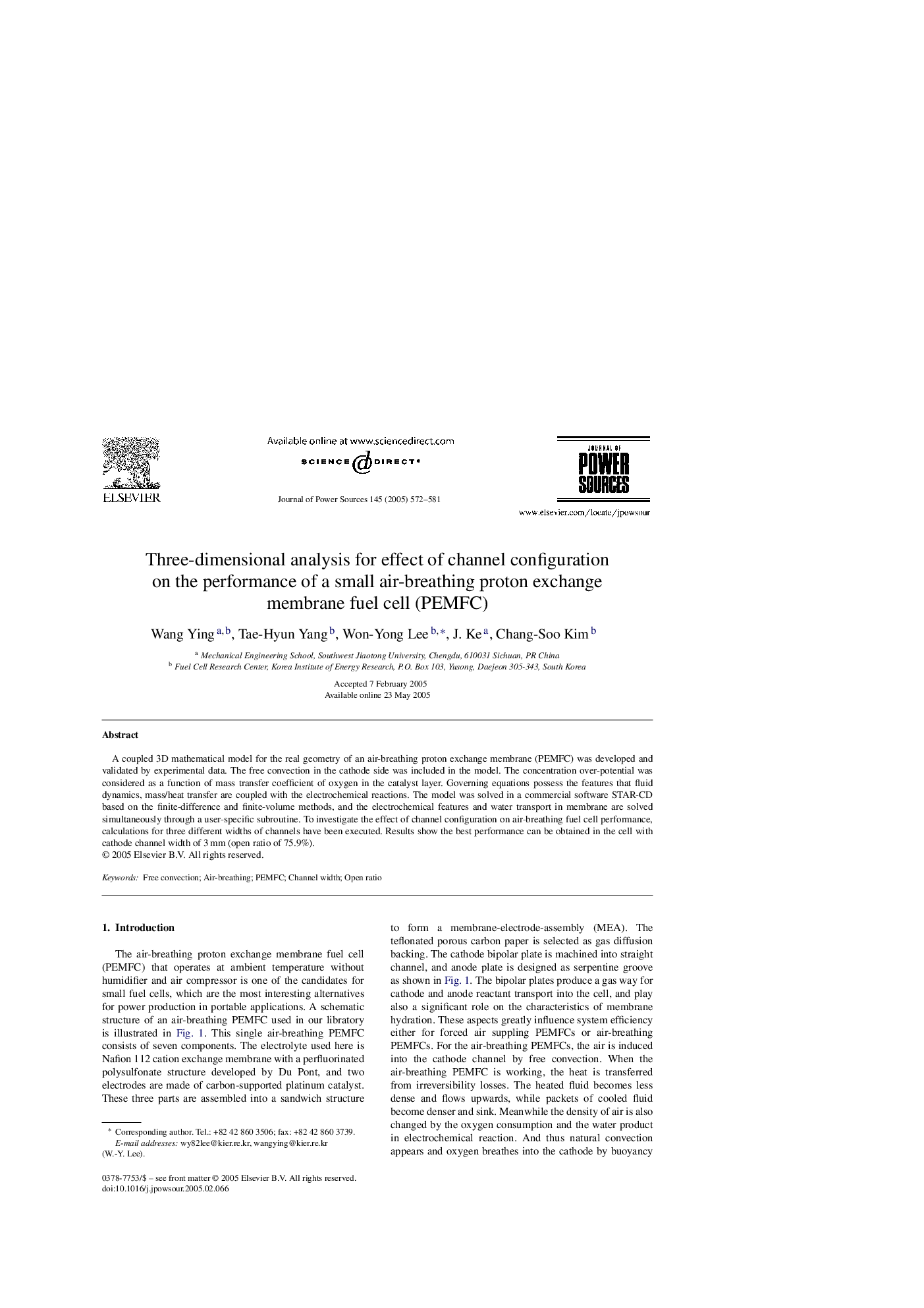| Article ID | Journal | Published Year | Pages | File Type |
|---|---|---|---|---|
| 10568204 | Journal of Power Sources | 2005 | 10 Pages |
Abstract
A coupled 3D mathematical model for the real geometry of an air-breathing proton exchange membrane (PEMFC) was developed and validated by experimental data. The free convection in the cathode side was included in the model. The concentration over-potential was considered as a function of mass transfer coefficient of oxygen in the catalyst layer. Governing equations possess the features that fluid dynamics, mass/heat transfer are coupled with the electrochemical reactions. The model was solved in a commercial software STAR-CD based on the finite-difference and finite-volume methods, and the electrochemical features and water transport in membrane are solved simultaneously through a user-specific subroutine. To investigate the effect of channel configuration on air-breathing fuel cell performance, calculations for three different widths of channels have been executed. Results show the best performance can be obtained in the cell with cathode channel width of 3Â mm (open ratio of 75.9%).
Related Topics
Physical Sciences and Engineering
Chemistry
Electrochemistry
Authors
Wang Ying, Tae-Hyun Yang, Won-Yong Lee, J. Ke, Chang-Soo Kim,
